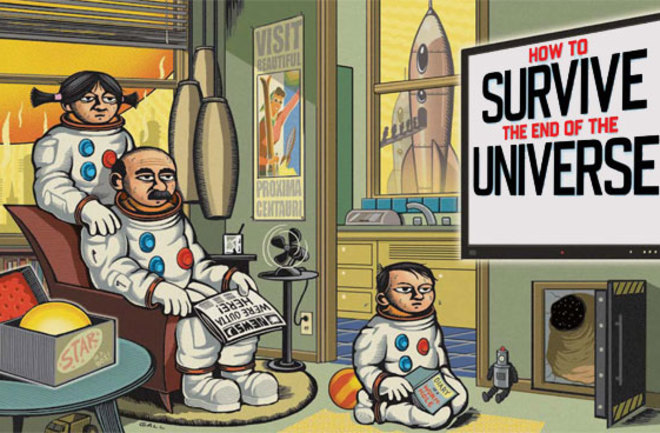This year will be a doozy for doomsayers. Depending on the prophecy, the world is predestined to expire by means of a solar storm, asteroid strike, rogue-planet collision, plague, falling stars, earthquake, debt crisis, or some combination thereof. Of course, nobody seems to be preparing for any of these impending 2012 apocalypses, with the exception of a porn studio reportedly building a clothing-optional underground bunker.
And why should we? Scientifically speaking, the prophecies are strictly ballyhoo. Physicists can do a lot better. When it comes to end-times scenarios, cosmological data-crunchers have at their disposal far more meaningful prognostication tools that can tell us how it’s really going to end—not just Earth, but the whole universe. Best of all, they can tell us how to survive it.
Science, oddly, is a lot better at predicting things like the death of stars than next week’s weather. The same laws of physics that enable scientists to study the Big Bang that occurred 13.7 billion years ago also allow them to gaze into the future with great precision. And few people have peered farther than University of California, Santa Cruz, astronomer Greg Laughlin, science’s leading soothsayer. As a graduate student in 1992, he was plugging away at a simple computer simulation of star formation when he broke for lunch and accidentally left the simulation running. When he returned an hour later, the simulation had advanced 100 million billion years, much further into the future than most scientists ever think (or dare) to explore.
The program itself didn’t reveal anything terribly startling—the simulated star had long since gone cold and died—but Laughlin was intrigued by the concept of using physical simulations to traverse enormous gulfs of time. “It opened my eyes to the fact that things are going to evolve and are still going to be there in timescales that dwarf the current age of the universe,” he says.
Four years later, still fascinated, Laughlin teamed up with Fred Adams, a physics professor at the University of Michigan, to investigate the future of the universe more rigorously. Working in their spare time, the two researchers coauthored a 57-page paper in the journal Reviews of Modern Physics that detailed a succession of future apocalypses: the death of the sun, the end of the stars, and multiple scenarios for the fate of the universe as a whole.

